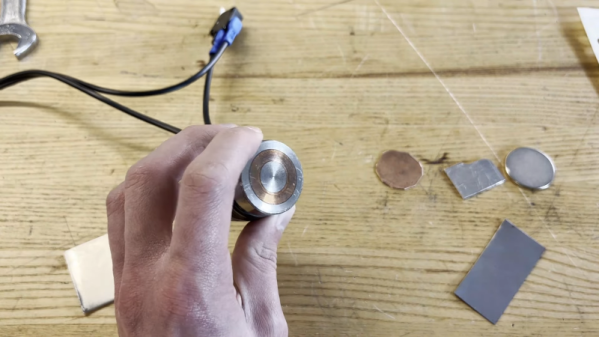It is a common grade school experiment to wind some wire around a screw, power it up, and watch it pick up paper clips or other ferrous materials. It is also grade school science to show that neither an electromagnet nor a permanent magnet will pick up nonferrous items like copper or aluminum. While technically not an electromagnet, it is possible to build a similar device that will weakly pull on copper and aluminum, and [Cylo] shows us how it works in a recent video you can see below.
The device sure looks like an electromagnet made with magnet wire and a steel core. But when he shows the ends of the core, you’ll see that the side that attracts aluminum has a copper ring embedded in it. The coil is fed with AC.
The magnetic field from the coil induces an opposite field in the copper ring that is out of phase with the exciting field. The two fields combine to produce a force on the metal it interacts with. This is often referred to as a shaded pole, and the same technique can help AC motors self-start as well as hold in relays driven by AC. If you want to see much more about aluminum floating on a magnetic field, check out the 1975 video from [Professor Laithwaite] in the second video below.
You probably have a shaded pole AC motor in your microwave oven. Or, maybe,your old 8-track player.
Continue reading “Sort Of Electromagnet Attracts Copper, Aluminum”












